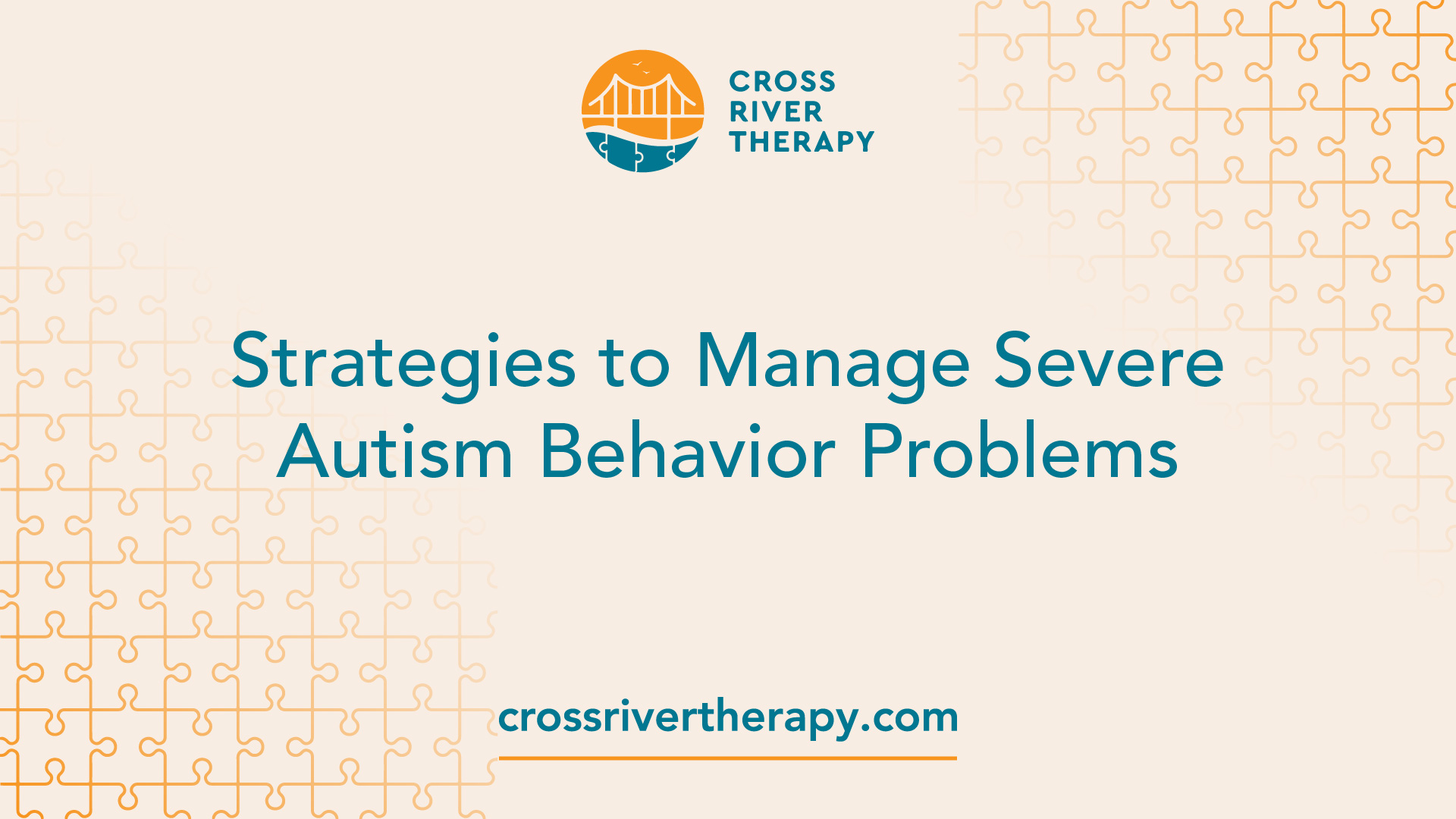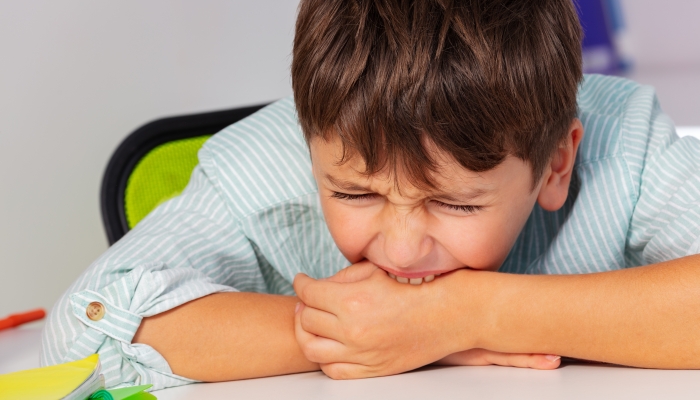A step-by-step guide to working with Autism Spectrum Therapies
A step-by-step guide to working with Autism Spectrum Therapies
Blog Article
Understanding the Impact of Behavioral Autism on Life and Social Communications
You may not understand just how deeply behavior autism impacts daily life and social interactions. Individuals on the range usually navigate a globe filled with interaction obstacles and sensory overload. These obstacles can lead to stress and isolation, affecting their partnerships and overall health.
Defining Behavior Autism and Its Features
Behavioral autism, commonly referred to as autism spectrum condition (ASD), encompasses a variety of conditions defined by challenges in social communication, interaction, and repeated habits. You might discover that individuals with ASD typically have a hard time to translate social cues, which can lead to misconceptions in discussions. They may find it difficult to establish eye contact or participate in tiny talk, making social circumstances really feel overwhelming.
Communication difficulties can show up in numerous ways, from postponed speech advancement to a preference for utilizing fewer words. By identifying these characteristics, you can cultivate an environment that advertises approval and motivates effective communication, helping individuals with autism flourish in their everyday interactions.
The Spectrum of Autism: Recognizing Variability in Behavior
Autism range disorder (ASD) isn't a one-size-fits-all diagnosis; it varies widely amongst people. You may run into people that are highly verbal and involve easily in conversations, while others might favor solitary tasks or communicate non-verbally.
Moreover, the method individuals with ASD reply to sensory input can differ greatly; some may be bewildered by loud noises or brilliant lights, whereas others thrive in stimulating settings. The spectrum additionally includes distinctions in social interactions; some individuals might struggle to translate social signs, while others browse social settings with family member ease. Understanding this variability is vital, as it helps you value each individual's distinct experience and dressmaker assistance to their specific needs, promoting an extra inclusive setting for every person.
Interaction Obstacles Faced by Individuals With Autism
When you interact with people on the autism spectrum, you may notice their one-of-a-kind communication obstacles. They usually face troubles with both nonverbal and verbal hints, which can influence their social interactions. Recognizing these barriers is crucial for cultivating much better links and support.

Verbal Interaction Troubles
Numerous individuals on the autism spectrum experience spoken communication difficulties that can considerably influence their daily communications. Your tone, rate, or quantity may not align with social expectations, triggering others to misunderstand your intents. Identifying these difficulties can assist you and your assistance network establish approaches to enhance communication and promote far better connections with others in your day-to-day life.
Nonverbal Communication Barriers
Spoken interaction isn't the only difficulty people on the autism spectrum face; nonverbal communication barriers can be equally as significant. You might locate it difficult to translate body movement, faces, and eye call, which are crucial for efficient communication. These challenges can result in misconceptions or misconceptions of social signs, making communications really feel frustrating or confusing. You might have a hard time to reveal your very own feelings with nonverbal ways, leaving others not sure of your intentions or feelings. This separate can develop sensations of seclusion and disappointment. Identifying these barriers is important for cultivating understanding and compassion in your communications. By attending to nonverbal interaction, you can discover techniques to boost your social experiences and enhance your overall top quality of life.
Social Communication Effects
Social communications can frequently really feel overwhelming due to the distinct communication difficulties dealt with by individuals with autism. Acknowledging these obstacles can aid you locate techniques to improve interaction, such as practicing social abilities in safe settings or utilizing aesthetic aids. Understanding your demands permits you to navigate social communications with better self-confidence and convenience.
Social Communication and Relationship Structure in Autism
While structure partnerships can be challenging for individuals with autism, recognizing their one-of-a-kind point of views and communication designs can cultivate purposeful links. You might see that many people on the range choose straight communication and may have a hard time with social signs or tiny talk. By being uncomplicated in your communications, you can assist create an environment where they really feel comfy.
Put in the time to observe and pay attention just how they reveal themselves. This insight can guide you in steering conversations a lot more properly. Participating in shared rate of interests can likewise function as a bridge to much deeper connections. Whether it's a pastime, a preferred show, or a mutual enthusiasm, these usual strings can open up doors to relationship.
Daily Life Regimen: Navigating Challenges and Strategies
Maneuvering day-to-day life regimens can be especially challenging for individuals with autism, specifically when unanticipated adjustments take place. You may locate convenience in having a structured timetable, as it helps you anticipate what's next. It's normal to really feel overwhelmed or anxious when disruptions occur. To navigate these challenges, take into consideration implementing aesthetic schedules or checklists. These tools can offer quality and confidence.
Developing a routine that consists of sensory breaks can likewise be useful. You can intend short breaks throughout your day to recharge. It's vital to communicate with those around you, letting them understand your needs and preferences. This assists produce an understanding setting.
Finally, practice mindfulness strategies to handle stress and stress and anxiety. Straightforward look at these guys breathing exercises or basing methods can make a substantial difference. By integrating these strategies, you can boost your daily routine and minimize interruptions, making life feel more manageable.
Strengths and Capacities of Individuals on the Autism Range
Comprehending daily life routines is simply one element of the autism experience. Many people on the autism range have remarkable toughness and capacities that set them apart. You may locate that your attention to information is phenomenal, allowing you to stand out in jobs that need precision and focus. Your capability to assume outside package can result in cutting-edge services in numerous scenarios.
Moreover, your memory abilities typically radiate, especially in locations of interest. Aba Therapist. This knack for preserving info can make you a beneficial source in fields like science, technology, or art. You may also show strong aesthetic thinking, enabling you to visualize intricate principles and address troubles artistically
Additionally, your one-of-a-kind perspective on the world can cultivate compassion and understanding in others, enriching social interactions. Accepting these toughness not check my source only increases your confidence but additionally aids others appreciate the diverse talents you offer the table.
Producing Inclusive Environments for Individuals With Autism
Producing inclusive settings for individuals with autism begins with developing sensory-friendly areas that provide to their unique demands. You can likewise foster chances for social communication, helping to construct connections and relationships. By making these adjustments, you'll contribute to a more welcoming atmosphere for everybody.
Designing Sensory-Friendly Spaces
While making sensory-friendly spaces, it's essential to mirror on the special demands of people with autism. Include peaceful areas where individuals can charge and pull away when bewildered. Consist of visual schedules or clear signage to assist people browse the room with confidence.
Advertising Social Interaction Opportunities
Designing sensory-friendly spaces not only addresses private convenience yet also sets the stage for meaningful social communications amongst individuals with autism. To promote these interactions, develop inclusive settings that welcome involvement. Arrange structured tasks, like art classes or group video games, that encourage cooperation without frustrating sensory input. Usage aesthetic help and clear interaction to aid every person engage comfortably. Motivate peer mentoring, combining individuals with autism with supportive peers that can assist them via social situations. Additionally, take into consideration hosting routine community events that commemorate neurodiversity, cultivating approval and understanding among all individuals. By applying these approaches, you can boost social opportunities, assisting individuals with autism develop friendships and enhance their social skills in a risk-free, welcoming atmosphere.

Frequently Asked Concerns
How Can Friends Support A Person With Behavioral Autism?
You can support a friend with behavior autism by holding your horses, listening actively, and appreciating their borders. Involve in activities they enjoy, interact openly, and produce a comfy setting where they really feel valued and recognized.
What Resources Are Offered for Moms And Dads of Children With Autism?
You can explore numerous sources for moms and dads of children with autism, consisting of assistance teams, instructional internet sites, and local area services. Connecting with other parents can additionally supply beneficial understandings and shared experiences to help navigate obstacles.
Can Behavioral Autism Adjustment Over Time?

Yes, behavior autism can alter over time. You might observe changes in interaction, social skills, and actions as your youngster expands. Early intervention and assistance frequently play crucial duties in these developmental modifications.
Exactly How Do Sensory Level Of Sensitivities Impact Every Day Life?
Sensory level of sensitivities can make have a peek at this site daily experiences frustrating. You might battle with intense lights or loud noises, resulting in stress and anxiety or avoidance. Discovering settings that suit your demands can greatly enhance your comfort and overall day-to-day live.
What Are Usual Misconceptions About Behavioral Autism?
You could think behavior autism only impacts interaction abilities, yet it's even more facility. Lots of think individuals lack compassion or intelligence, which isn't true. Recognizing these misconceptions helps foster approval and assistance for those on the range.
Behavioral autism, often referred to as autism spectrum disorder (ASD), encompasses a variety of conditions identified by difficulties in social interaction, communication, and repetitive actions.Social communications can usually feel overwhelming due to the special communication challenges dealt with by individuals with autism.Creating sensory-friendly areas not just addresses individual convenience however also sets the stage for purposeful social interactions amongst individuals with autism. Urge peer mentoring, coupling people with autism with supportive peers that can direct them through social situations. By carrying out these techniques, you can boost social opportunities, aiding people with autism develop relationships and strengthen their social skills in a safe, inviting atmosphere.
Report this page